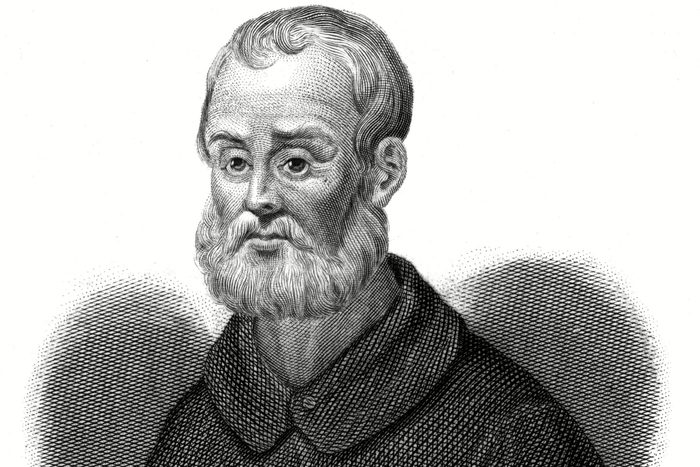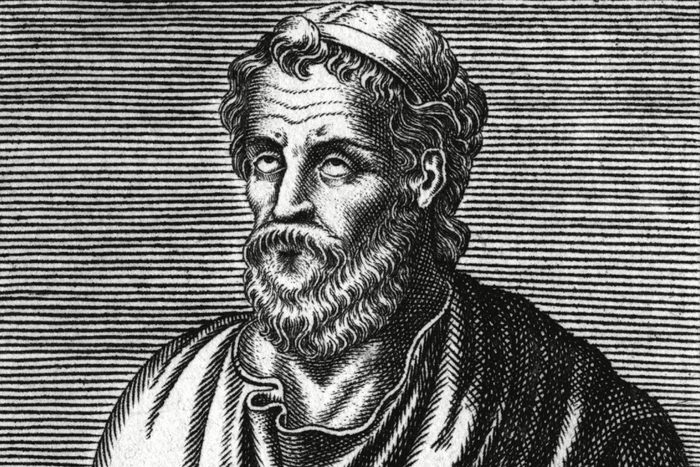Were these incredible historical figures actually people that don't exist? The jury's still out.

10 Historical Figures Who May Not Have Existed


King Arthur
The best place for happily-ever-after is the kingdom of Camelot, ruled by King Arthur, who leaned on the advice of the wizard Merlin to lead the Knights of the Round Table. But he may be entirely fictional. The tale was popularized in stories dating back to the 800s—about 1,200 years ago—and it was the inspiration for Alfred, Lord Tennyson’s epic poem Idylls of the King. (Also Monty Python and the Holy Grail, if that’s more your speed.)
Scholars aren’t sure if these works are based on a real warrior who led British armies during the fifth or sixth century, or if he even existed at all.

Pythagoras
Even if you can’t remember exactly what the Pythagorean theorem is about (triangles!), you’ve probably heard of the famous math equation. The ancient Greek philosopher Pythagoras is one of the most famous mathematicians in history, but scholars debate whether he came up with the famous theorem that’s been giving geometry students trouble for centuries. (It could have been the Egyptians, judging by the pyramids.)
If Pythagoras did exist, he didn’t leave any records that he himself wrote, and the accounts that do remain were written long after his death—perhaps by his somewhat unreliable followers.

Robin Hood
Robin Hood is most famous for stealing from the rich to give to the poor, but the fair-minded outlaw might only exist as a fictional hero. Medieval scholars turned up records of criminals named “Robehod” and “Rabunhod,” but they’re not sure who they were or how they got their names. Folk heroes like Robin Hood are prime candidates for the list of people that don’t exist, and after 700-plus years of legend, it’s hard to know for sure.
What we do know is that stories about outlaws who buck the system have been popular throughout history. Everyone roots for Robin Hood!

Sun Tzu
Sun Tzu is the author of the bestselling strategy guide The Art of War. The ancient book is believed to have been written in the fourth or fifth century, but its age hasn’t stopped it from being consulted and employed by contemporary generals and CEOs. No one is sure if the Chinese military mastermind actually existed, or if the strategy classic was a compilation of Chinese wisdom gathered by many across time—and then attributed to a single author.

Homer
The famous poet and supposed writer of the iconic literary works the Odyssey and the Iliad may not have existed at all, argue scholars. They believe Homer was created out of a cultural need for an author for the great Greek myths we all learned in school. The works were possibly written much earlier than scholars originally believed, and compiled by many authors across time through oral traditions. This theory has become known as the “Homeric Question.”

Mulan
Mulan is the iconic Chinese warrior that every modern child knows thanks to Disney, which released the now-famous animated movie. This inspiring young woman is a figure in a beloved Chinese folktale that dates back to the fifth century. There are multiple versions of the tale of a girl who takes her father’s place as a warrior because he’s too old to fight, but she usually hides her identity and leads an army to victory.
Unlike the situation with many other suspected people that don’t exist, most scholars agree that there’s no historical evidence of this particular brave and fierce warrior—though plenty of other women throughout history fit the bill.

William Tell
William Tell is the famous Swiss archer who was forced by a despot to shoot an apple off his son’s head. Tell’s arrow didn’t miss, and the Swiss point to the heroic act as the start of Switzerland’s movement to become an independent nation. Although the event is supposed to have taken place in 1307, researchers haven’t been able to find evidence that the story or the man are more than an inspiring myth.

Betty Crocker
You think of her as the classic kitchen goddess who knows everything about baking. Unfortunately, she’s definitely a person who didn’t exist—because the company that became General Mills invented her to answer consumer questions. The surname Crocker came from a company director, and Betty was considered a “friendly sounding name.” Soon, the persona became a reliable and beloved expert on cooking and recipes.

John Henry
The superhuman railroad man was a little too good to be true: The John Henry ballads sprang out of the post–Civil War era when the railroads were being built and America aimed to become a titan of industry. Henry was said to be a former slave who challenged a steam drill to a race—and won, only to die shortly after.
The story highlights grit and determination, but while evidence supports the idea that John Henry was a real man who did work on the railroads, the story itself is likely fiction. It seems to be a folkloric composite of many stories featuring citizens who embodied the fearless American spirit.

Uncle Sam
You know him as the top-hatted, gray-haired patriot on the “I Want You” recruiting posters. The figure was inspired by a real guy: businessman Samuel Wilson, who supplied army provisions. Soldiers during the war of 1812 would joke that their food came from “Uncle Sam,” but they weren’t referring to the distributor—they were referring to the actual army. The nickname spread, especially in newspapers, and by World War I, Uncle Sam became the familiar popular figure we all recognize today.
Why trust us
At Reader’s Digest, we’re committed to producing high-quality content by writers with expertise and experience in their field in consultation with relevant, qualified experts. We rely on reputable primary sources, including government and professional organizations and academic institutions as well as our writers’ personal experiences where appropriate. We verify all facts and data, back them with credible sourcing and revisit them over time to ensure they remain accurate and up to date. Read more about our team, our contributors and our editorial policies.
Sources:
- Betty Crocker: “The Story of Betty Crocker”
- Biography.com: “King Arthur”
- Britannica: “Sun Tsu”
- Britannica: “William Tell”
- Cambridge University Press: “The Homeric Question”
- History.com: “The Real Robin Hood”
- History.com: “Who Was the Inspiration for ‘Uncle Sam’?”
- National Park Service: “John Henry and the Coming of the Railroad”
- World History Encyclopedia: “Mulan: The Legend Through History”
- A World of Women in STEM: “Ancient Mathematics: Triangles in Egypt”



















